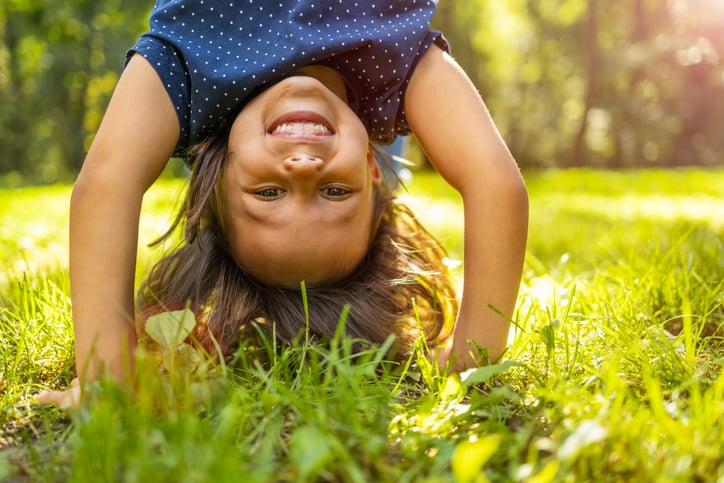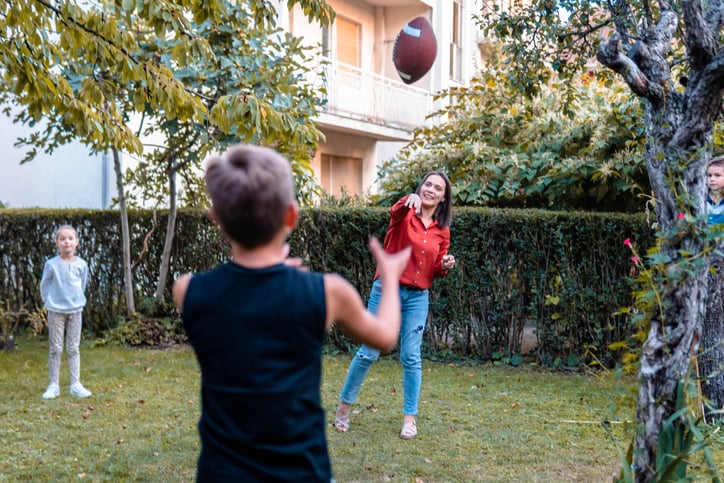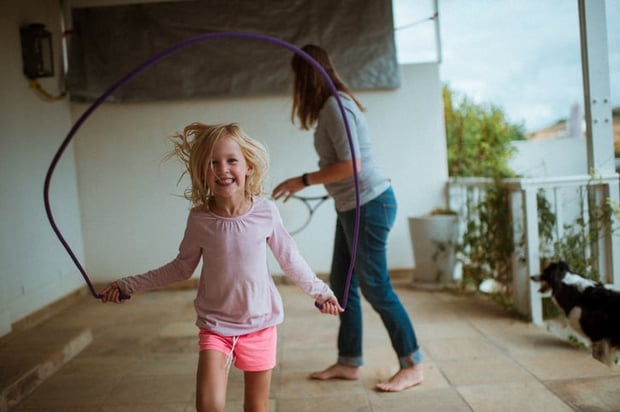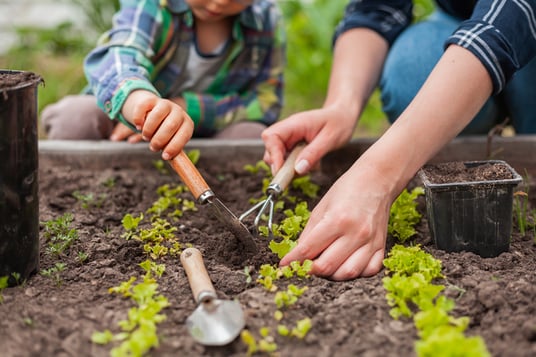Top Ten Outdoor Learning Strategies for Students With Autism
Outdoor learning can be a powerful and valuable aspect of the educational experience for all children–especially those with autism. Given adequate opportunities to explore, develop an imagination, acquire fine motor skills, and engage in sensory play, children can achieve physical and academic milestones–as well as personal goals for success. Learning in a natural environment has many benefits and aids in the growth, development, and attainment of knowledge both inside and outside of the classroom setting.
Outside play can increase physical health, improve one’s level of concentration, encourage social-emotional development, and contribute to positive outcomes in behavior and overall personal well-being.1 Additionally, by providing exposure to the sun, the body produces vitamin D–a micronutrient necessary for immune function and protection of bone, muscle, and heart tissue.2 Children learn to interact and socialize with peers while playing in unstructured outdoor environments. In fact, allowing students to engage in these opportunities can improve communication, active listening, conflict resolution, and other important cognitive skills as well.
Some suggestions to consider when creating an outdoor classroom to encourage learning in a natural environment include:

-
Always put safety first
Safety should be a top priority when encouraging play in outside settings. Depending on the age of the students, consider having the outdoor classroom fully fenced in and keep a close eye on each child at all times. Remove any potentially dangerous items–such as nails, large twigs, or gardening supplies–from the area, and provide several shady places where students can go to rest.1 If the play area does not have any natural shade from trees, consider building a small pavilion or gazebo.
-
Stay active and provide opportunities for sensory play
Encourage students to engage in movement activities like red-light green-light, hide and seek, hopscotch, tag, four square, dodgeball, or monkey in the middle. Treasure hunts and obstacle courses can also be fun activities to have children do together.1 For students with autism specifically, providing items for sensory play–such as sandboxes, swings, bubbles, and chalk–helps strengthen the brain’s response to stimuli in the surrounding environment. Special days can be dedicated to water play, outdoor painting, age-appropriate crafts, and field day.
-
Promote fine and gross motor skill development
Children develop fine and gross motor skills through practice. Jumping rope, drawing in the dirt, hula hooping, painting with ice cubes, and throwing and catching balls are several ways to promote the development of fine and gross motor skills. Additionally, teaching students to ride a scooter or bike–and taking regular trips to the playground–fosters fine and gross motor skills as well.

-
Encourage socialization with others
Learning to socialize with peers is essential, especially for those on the autism spectrum. Outside play allows children to use their imagination and play together, often building effective communication skills in the process. Even providing brief opportunities for outdoor play–such as a 15-minute recess each day–allows children to participate in activities that build their active listening, confidence, and conflict-resolution skills.
-
Explore with the senses
Exploring the physical world through the five senses of touch, smell, hearing, taste, and sight can occur during outdoor learning. Sensory play and fine and gross motor skill development can be practiced as well, and emotional regulation skills are often attained as students learn to use their senses to explore the environment around them. Each of these skills contributes to improved mood and reduced feelings of fear, stress, and anxiety–especially when practiced in outdoor environments. To encourage the use of the five senses in nature, instructors may wish to have students explore the texture of leaves, bark, and grass in the natural setting and then compare it with man-made items, such as asphalt parking lots, plastic slides on the playground, and concrete sidewalks.
-
Help students improve their balance, agility, and coordination
Outdoor play can aid in the development of coordination, balance, and agility.3 By providing access to teeter totters, hula hoops, jump ropes, obstacle courses, and other similar items during outside time, children learn necessary self-awareness, balance, and agility skills through personal practice and direct observation. Allowing students to explore the natural world gives them the opportunity to become more in tune with their bodies as well as the surrounding environment.

-
Keep outdoor learning consistent
Learning in an outdoor environment does not need to be temporary.3&4 In fact, providing consistent outdoor play and learning opportunities is beneficial for all students, including those on the autism spectrum. Consider holding some classes outside to give students the opportunity to learn beyond the four walls of a typical classroom. Providing instruction in the natural environment allows access to fresh air, sunlight, and many other social, emotional, and cognitive benefits. Three simple ways to implement outside learning on a regular basis include: having recess consistently, eating lunch outside, and taking a hands-on approach to classroom lessons in the natural setting.
-
Keep it flexible and engaging
Outside play should be flexible, consistent, enjoyable, and engaging for all students. To keep the excitement alive, educators may wish to dedicate each weekday to a different activity–such as games, crafts, or scavenger hunts. Special once-a-month events can also be scheduled as a fun way to shake up the typical routine. Ice cream socials, water play, extra recess time, and field day, are several of many possibilities that can keep students excited about their time outside. Depending on the age and development of each student, instructors might consider having students earn access to special monthly events by engaging in positive classroom behaviors, walking quietly in the hallways, listening attentively while adults in charge speak, etc.
-
Foster language acquisition
Early language acquisition can be fostered by encouraging young students on the autism spectrum to label objects in the surrounding environment. Tacting (i.e., naming objects, actions, or events) can be a fun activity to do outside because there are many different items to point out, label, and name. Students may, for example, see an airplane flying overhead and shout “Plane!” as they point to it above. Tacting skills can also be initiated by having students answer the question “What is this?” when the instructor points to an item or describes a specific activity.

-
Use outdoor learning as a therapeutic tool
Outdoor learning can be therapeutic for students with autism as socialization, communication, and imagination skills are practiced, promoted, and honed. Learning to play with peers is a beneficial way to improve a variety of social, emotional, cognitive, and interpersonal skills as well. Educators should encourage the use of imagination, sensory play, and cognitive reasoning.
“Forest Bathing” is a special practice that originated in Japan, where it is called “shinrin-yoku.” Forest bathing is the intentional use of the outdoors to help quiet the mind, relax, and tune into nature and the present moment. It emphasizes using each of the senses to slow down and experience nature. Encourage students to use their feet to feel the ground and use their hands to touch the ground or trees or grass around them. Ask students to use their eyes to count and label how many colors they are seeing or to silently listen to all the natural sounds around them.
Without a doubt, it is evident that nature is beneficial for all of us–including those on the autism spectrum.5 Supporting children with autism as they learn, develop, and grow is an important factor to consider as physical and academic milestones are achieved. While growth and development may look different for each child on the spectrum, it is important to remember that not everyone progresses at the same rate (or under the same circumstances). Therefore, tailoring lesson plans both inside and outside of the classroom can be an essential component for success when educating those with autism.
What are some other ways to encourage outdoor learning among students on the autism spectrum?
References
- https://autismawarenesscentre.com/playing-outdoors-building-skills-exploring-and-creating-memories-for-those-with-asd/
- https://www.healthline.com/health/food-nutrition/benefits-vitamin-d
- https://www.marcus.org/autism-resources/autism-tips-and-resources/how-to-use-nature-to-nuture-your-child
- https://www.gse.harvard.edu/news/uk/21/08/make-outdoor-learning-your-plan
- https://www.autismparentingmagazine.com/nurture-structured-outdoor-learning/
For more helpful tips and strategies on outdoor learning for students with autism, check out our handout here!

Kenna McEvoy
Kenna has a background working with children on the autism spectrum and enjoys supporting, encouraging, and motivating others to reach their full potential. She holds a bachelor's degree with graduate-level coursework in applied behavior analysis and autism spectrum disorders. During her experience as a direct therapist for children on the autism spectrum, she developed a passion for advocating for the health and well-being of those she serves in the areas of behavior change, parenting, education, and medical/mental health.




